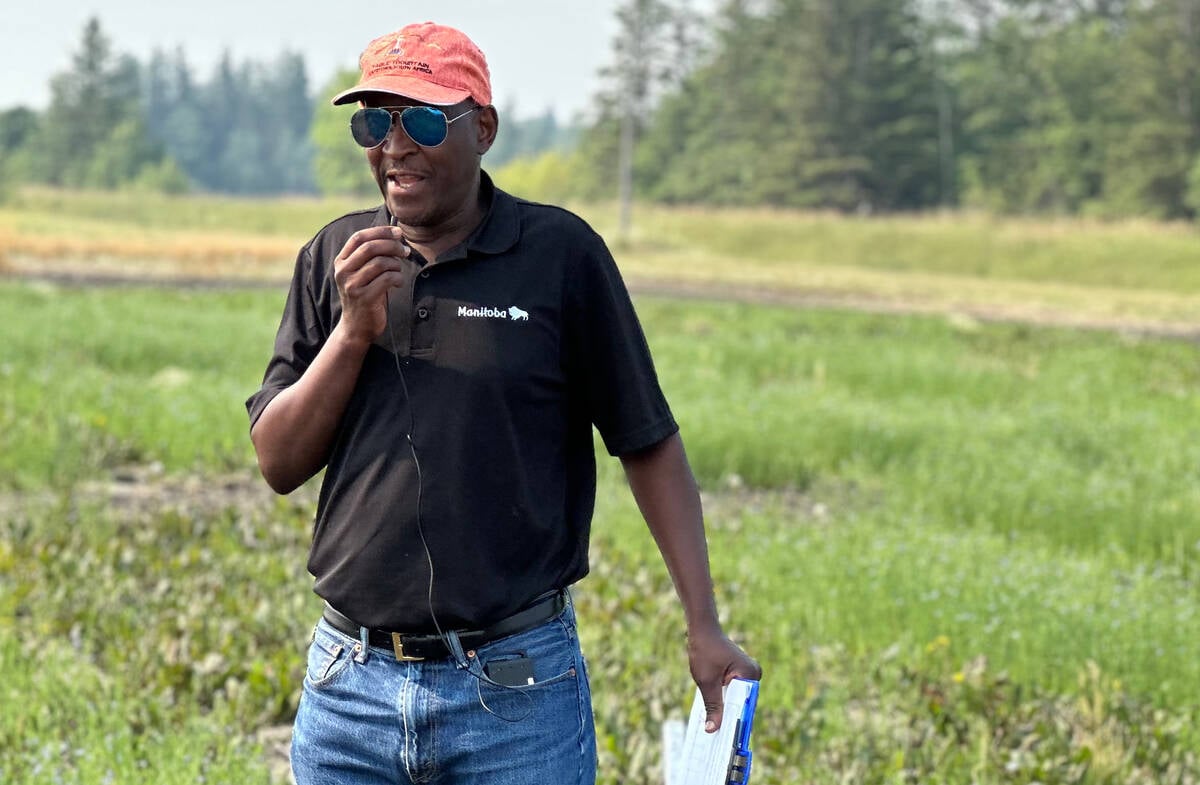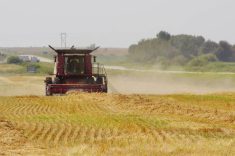“I am paralyzed by choice when it comes to integrated weed management. I don’t know which practices actually matter most.”
That’s not a real quote, but it could be. Too much information can actually stifle action, and integrated weed management is no exception.
In that case, which options should the producer key in on when sorting out which of the wide and varied list of weed management tools they could potentially use are the most valuable?
Read Also

How much nitrogen can farmers really cut?
Manitoba fertilizer trials look for nitrification inhibitor sweet spot, to lower greenhouse gas emissions and cost without hurting yield.
WHY IT MATTERS: Spring has sprung and, with it, weed seedlings are poking out of the ground.
When you ask weed management specialists for their top three, there are a few common answers.
“Overall, my top three would be seeding rate, row spacing and crop rotation,” said Charles Geddes, weed research scientist with Agriculture and Agri-Food Canada in Lethbridge, Alta.
Crop rotation introduces a number of practices to keep weeds off balance. Some crops establish faster, grow taller or have winter or perennial seasons and varying harvest times. A crop with an earlier harvest can mean weeds are cut off before they set seed. Later harvest can prevent fall establishment of winter annuals.
Crop rotation can also add variability to the farm’s herbicide package, but another expert, Shaun Sharpe, says the variability may be less than the farmer thinks.
“I am not convinced our diverse crop rotations provide the in-crop herbicide options necessary to manage the weeds we’re facing,” said the weed research scientist with Agriculture and Agri-Food Canada in Saskatoon, Sask.
Fall-applied products and pre-seed burnoff will enhance the herbicide rotation options, he added.
Geddes’s other two choices — higher seed rate in combination with narrower row spacing — provide faster ground cover in the spring, leaving weeds less room. Natural crop competition is a valuable step in suppressing weed growth.
“Of course farms cannot easily change row spacing at this stage of the season,” says Shawn Senko, agronomy specialist with the Canola Council of Canada, “but it is something to consider when choosing seeding tool configurations for the future.”

Kim Brown, weed management specialist for Manitoba Agriculture, selected the same three tools as Geddes. Brown said the rise in row-crop soybean acres in the Manitoba presents a challenge for crop competition. She’d like to see narrower rows for the other crops.
“I can understand why drills have 12- and 15-inch spacing, but this is not cool from a weeds perspective,” she said.
Sharpe included scouting and sanitation in his top three, putting his top picks in alignment with Breanne Tidemann’s.
“My personal top three in terms of things farmers can easily do this year without a massive change to their system or requiring a large investment would likely be seeding rate, scouting and sanitation,” said Tidemann, weed research scientist with Agriculture and Agri-Food Canada in Lacombe, Alta.
Sanitation can include cleaning combines after finishing a particularly weedy field and using weed-free seed.
In the vein of relatively easy steps, Tidemann also highlights the importance of following herbicide labels, “with an emphasis on weed size.”
A farm might follow all other steps on the label, but if the weeds are too large for the label rate, control likely won’t happen.
Tidemann includes one other note: “We tend to focus on the multiple options or packages because we know that more items stacked together works better,” she said.
Herbicides alone don’t cut it.

What producers are doing
“We have a herbicides-first approach to weed management, driven mostly by a history of fairly effective results,” Senko said.
As herbicide resistance becomes more and more of an issue, though, attention is shifting to the broader, integrated management approach.
The Canola Council of Canada ran a grower survey after harvest 2024. One question asked which integrated weed management practices growers follow. The most common answer was tank mixes and rotating herbicide groups. Second was using earlier or later seeding dates. Third place was claimed by increasing crop competition, including options narrower row spacing and higher seeding rates.
Results suggested that farmers are closely aligned with the weed specialists. Effective herbicide tank mixes are important. Crop rotation in combination with narrower rows and higher seeding rates are good starting points to reduce weed competition and selection pressure for weeds with herbicide resistance.
If scouting shows a continued rise in weed competition though, it’s time to add other practices from the integrated weed management list.
“While these top three are important, the right mix of practices really depend on the situation,” Geddes said.
The integrated weed management short list
The list of integrated weed management practices can be intimidatingly long. Weed specialists tend to like the crop rotation step in combination with higher seeding rates and narrow row spacing. Here’s a short list of options and how they play into weed control.
Make the crop more competitive
1. Use higher seeding rates.
2. Vary the seeding dates.
3. Seed at a shallow depth.
4. Use narrow row spacing.
5. Choose taller crops.
6. Place fertilizer where crop can access it before weeds. Don’t broadcast.
7. Use seed treatment to promote faster growth.
Keep weeds off balance
1. Use crop rotation to introduce crops that compete in different ways, including winter crops and perennials.
2. Tank-mix effective herbicides from different chemistry groups.
3. Consider strategic tillage, especially for concentrated areas with large or challenging weed populations.
Prevent weed problems before they start
1. Scout each field before and after herbicide application.
2. Keep records, including which weeds are present in a field, which herbicide products are used, rates used and weather conditions at application.
3. Follow herbicide labels and check restrictions to improve results.
4. Use sanitation, including combine clean-out and clean seed.
5. Invest in harvest weed seed control, such a combine chaff mills.
For more details on each step, read “Integrated weed management: Best practices” at canolawatch.org.
Jay Whetter is a communications manager with the Canola Council of Canada.














